Our 10 Favorite Monsters
Monster madness
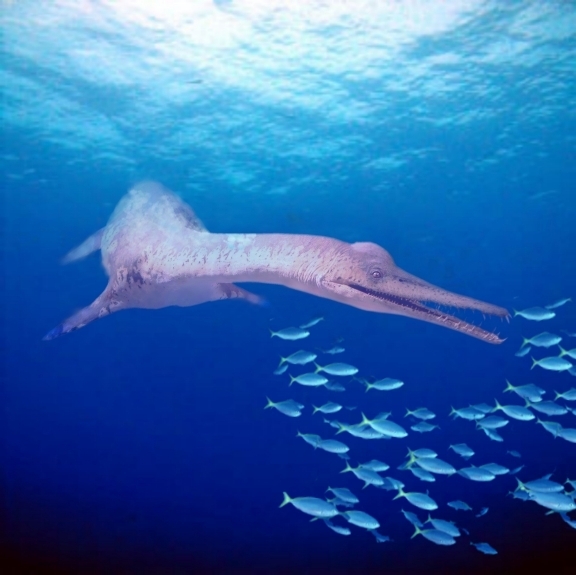
Mankind has always had a fascination with monsters. Mythologies from around the world include stories of strange and terrifying creatures, including the half-bull, half-human Minotaur of Greek myths, the living clay Golem of Jewish traditions, British elves and Chinese dragons.
Though these monsters are obviously fiction, only a century or two ago belief in the beasts was common. Modern monsters aren't quite so fantastic, and while most people doubt their existence, some are certain that unknown monsters inhabit our pale blue dot. It seems that every few months, monsters of one kind or another make the news. Sometimes it's a new fuzzy home video of something in the water at Loch Ness; other times it's a hunter's photo of what could be a Bigfoot — or a mangy bear.
Whether these monsters exist or not, the mysteries will always be with us.
Bigfoot
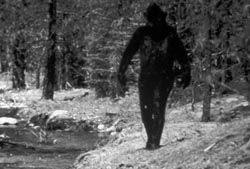
Bigfoot is of course the world's marquee monster, having had pizzas and monster trucks named after it. Bigfoot is known not for what it is (since no one knows for certain what it is, or if it even exists), but what it supposedly leaves behind: large footprints. Bigfoot's high profile is largely due to a short film taken in 1967 in Bluff Creek, Calif. This is the classic footage of Bigfoot, showing a furry, man-sized creature walking across a clearing. The film has never been proven authentic, and many suspect a hoax.
It is also odd that the film remains the best evidence for Bigfoot 40 years later, despite the fact that video cameras are better, cheaper and in more hands than ever before; surely if it was not a hoax someone would have recorded a film as good or better since then. Perhaps Bigfoot's most amazing quality is its ability to leave no hard evidence of its existence. No teeth, bones, live nor dead specimens have been found. By one estimate, there should be hundreds of thousands of Bigfoot in North America, yet not one of them has been hit by a car, shot by a hunter, or found dead by a hiker.
Vampires
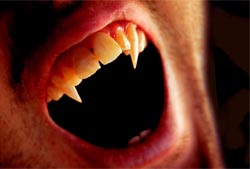
A century after Bram Stoker modeled his Dracula character after Romanian national hero Vlad Tepes, interest in vampires has never been stronger. From Dracula to the "Blade" films, from Anne Rice novels to "Buffy the Vampire Slayer," no single monster has captured the public's imagination the way vampires have. At once both sensual and scary, vampire lore has inspired a thriving goth subculture. Despite strong evidence that vampires are a fictional creation, some people even claim to be vampires, conducting arcane rituals and consuming blood from willing donors. Let's hope they show up for the blood drive!
Werewolves
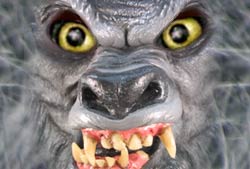
The fearsome werewolf is a fascinating blend of man and beast. Some believe that a werewolf terrorized the French countryside in 1764, when a strange wolflike creature killed dozens of villagers; the fictionalized story was depicted in the film "Brotherhood of the Wolf." The werewolf is only one variation of lycanthropy, the ancient belief that certain people have the ability to change into animals, either at will, on certain dates, or on full moons. Witches and vampires, for example, are said to become cats, bats, and wolves on occasion.
While the werewolf's origins are unclear, an unusual disease that causes excessive body hair (called hypertrichosis) may have contributed to belief in werewolves — in fact sideshow performers with the disease were once exhibited as werewolves or "wolfmen." The connection with the full moon likely came about because of wolves' and dogs' tendency to bark at the moon. But stories of silver bullets didn't arise until much later.
Loch Ness Monster

No list of monsters would be complete without the beastie said to inhabit Scotland's Loch Ness. While Nessie is the world's most famous lake monster, it is far from the only one. In fact, there are hundreds (by some counts thousands) of lakes across the globe said to harbor monsters.
The earliest eyewitness account of the Loch Ness monster dates back only to May 1933. Since that time, the monster — real or not — has been a major tourism boon for Inverness and other towns along the lake. People have repeatedly searched Loch Ness for over 70 years, trying to verify the occasional sightings, photos, and videos. In 2003, a team from the BBC scoured the lake using 600 separate sonar beams and satellite navigation; they turned up no monsters. Still, the public's interest in Nessie remains high: A film about the monster opened Christmas day in 2007 and earned $2.4 million.
Sirens
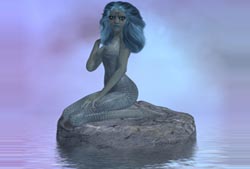
A distant cousin of the mermaid (in folkloric terms anyway), the sirens were beautiful, alluring women who dwelled near rocky cliffs and sang to passing sailors. According to legends, the hapless seamen would become enchanted by the sirens' song, following the mellifluous melody to their deaths as their boats crashed upon the rocky shore. It is an ancient morality tale about the evils of women, but not all sirens were so comely.
Other accounts depict sirens as half-bird, half-woman creatures who would lure travelers to their doom with harps instead of their voices. In Greek myth, Odysseus escaped the sirens by having his sailors plug their ears with beeswax, though in modern times doctors recommend soft foam earplugs for sailors who may encounter these dangerous monsters.
Chupacabra
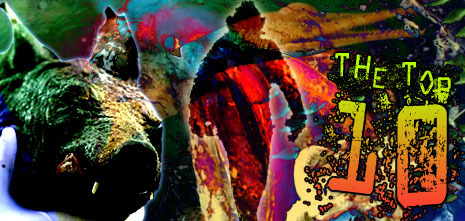
Bigfoot is named after its big footprints, and the dreaded chupacabra is also known for what it leaves behind: dead animals. Though goats are said to be its favorite prey (chupacabra means goat sucker in Spanish), they also have been blamed for attacks on cats, sheep, rabbits, dogs, chickens, ducks, hogs and other animals.(There is no record of a chupacabra attacking a Bigfoot, though I'd like to see that.) Descriptions of chupacabras vary widely, but many accounts suggest that the creature stands about 4 to 5 feet tall. It has short but powerful legs, long claws, and terrifying, glowing red eyes.
Chupacabras first gained wide notoriety in 1995 in Puerto Rico. No one knows for certain why or how the chupacabra suddenly sprang into existence, but many Latin Americans believe it is the unholy result of secret U.S. government experiments in the jungles of Puerto Rico. It had a heyday of about five years, when it was widely reported in Mexico, Chile, Nicaragua, Spain, Argentina and Florida — almost exclusively in Spanish-speaking areas. While widely regarded as a myth, occasional chupacabra sightings are reported in the United States, primarily in Texas and New Mexico.
Champ
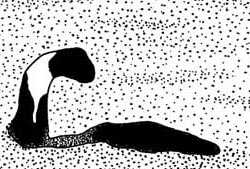
Often referred to as "America's Loch Ness Monster," the mysterious creature in Lake Champlain (which borders Vermont, New York, and Canada) is called Champ. Descriptions of the beast vary widely, but is it said to be anywhere from 10 to over 100 feet long, have dark skin covered with several humps. Its head supposedly resembles a snake or dog.
A photograph claimed to be of the monster was published in The New York Times in 1981, giving the monster national notoriety, and was considered the best evidence for Champ — in fact for any lake monster. Ironically, the photograph that propelled Champ to stardom was later revealed in a 2003 investigation to be almost certainly an image of a floating log instead of a lake monster. While Champ sightings have waned in recent years, the legend is kept alive by the local minor league baseball team and the Vermont Lake Monsters.
Giant Squid
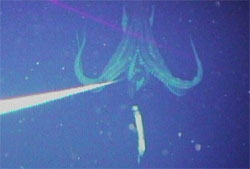
The giant squid is the only top 10 monster that is known to be real, though for centuries its existence was often rumored. Ancient sea stories told of the fearsome Kraken, a huge many-tentacled beast, said to attack ships and sailors on the high seas.
Biologists finally verified the existence of a true sea monster: the mysterious giant squid Architeuthis. Dead specimens periodically wash up on the world's beaches, most often on islands whose name begins with "New" — Newfoundland and New Zealand. The largest giant squid specimen was estimated to be 65 feet long, but the monster remained elusive until 2004, when Japanese zoologists filmed a giant squid at depth for the first time. The creature was about 26 feet long, was found nearly 3,000 feet below the surface.
Dragons
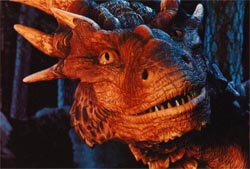
Perhaps the oldest monster of folklore, there are many variations on dragons and giant serpents. The Bible's Book of Isaiah describes Leviathan, a monstrous sea serpent dragon. Some of the most developed dragons come from Chinese cultures; in fact for centuries some rural Chinese dug up (and made tea from) dinosaur bones, believing they were from dragons.
The West is rich in dragon folklore as well; stories of a Christian martyr named George who slew a fearsome dragon later became known as Saint George the Dragon Slayer. While dragons are ancient, they are more popular now than at any other time in history, appearing in role-playing games such as Dungeons and Dragons and popular films such as "Lord of the Rings."
Ogopogo
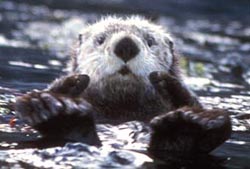
Canada reputedly has more lake monsters than any other country, boasting no fewer than a dozen in its cold waters. It's no surprise, therefore, that Lake Okanagan, located in British Columbia, might be home to one of the world's top 10 monsters. The lake monster, dubbed Ogopogo (from an old music hall song) is unique in that native Indians in the region used to make live sacrifices to a water spirit in the lake as they crossed in boats near the reputed home of Ogopogo, Monster Island.
Though any connection between the Indian legend and a modern monster is pure speculation, many eyewitnesses continue to report odd things in the lake. According to John Kirk, Ogopogo expert and president of the British Columbia Scientific Cryptozoology Club, there is far better evidence for the existence of a mysterious monster in Canada's Lake Okanagan than at Loch Ness. So if you happen to vacation on Okagangan's shores, bring your camera!
Sign up for the Live Science daily newsletter now
Get the world’s most fascinating discoveries delivered straight to your inbox.











